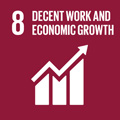- Docente: Roberto Carnero
- Credits: 6
- Language: Italian
- Teaching Mode: Traditional lectures
- Campus: Forli
- Corso: First cycle degree programme (L) in Languages and Technologies for Intercultural Communication (cod. 5979)
-
from Oct 03, 2024 to Dec 20, 2024
Learning outcomes
At the end of the course, the student knows the fundamental elements (contents, methods and tools) for the analysis of Italian literary civilization from the twentieth century to the present day; he/she is able to use them on specific texts in the field of contemporary Italian literature; he/she is able to autonomously elaborate further knowledge and analytical-literary skills of a higher level and to apply them to other literary texts.
Course contents
BAES students are reminded that the course of Italian Literature is offered only at the Forlì Campus and that the language of lectures will be Italian.
A first part of the course, of a general type, will be aimed at providing a framework including the fundamental features of the history of Italian culture and literature from the third decade of twentieth century to present days.
The second part, of a monographic nature, will focus on the figure and work of Pier Paolo Pasolini (1922-1975), with particular attention to the theme of young people.
Throughout his entire production, Pasolini saw young people as the cutting edge of society. Therefore in the youth group he believed he could understand more clearly those phenomena that concerned society as a whole. Alongside this, an evident pedagogical tension runs through his entire work, up to the extreme phase.
By retracing the most significant stages of Pasolini's artistic and intellectual parable, the course will try to answer the following questions: what did Pasolini say about young people? what did Pasolini say to young people? What can Pasolini say to today's young people?
Readings/Bibliography
For the preparation of the first part (the general one) it is advisable to refer to Roberto Carnero - Giuseppe Iannaccone, Classe di letteratura, volume 3/B (Dalla Prima guerra mondiale a oggi), Giunti TVP Editori - Treccani (ISBN: 978-88-09-94984-3) or to any other good Italian literature handbook with anthology of texts for secondary school. The handbook will not necessarily be "studied" entirely, but must be used as a constant point of reference for the reconstruction of the historical-cultural and historical-literary context within which Pasolini was trained and worked.
In particular, the following topics will be focused on: Italian culture during the fascism; Hermeticism; Italian culture after the Second World War (the season of commitment); Neorealism; the Neoavantgarde (Group 63); Postmodernism.
For the preparation of the second part (of a monographic type, specifically dedicated to Pasolini's work), students are requested to study the following books:
TEXTS:
- Pier Paolo Pasolini, Ragazzi di vita, Garzanti
- Pier Paolo Pasolini, Scritti corsari, Garzanti
- Pier Paolo Pasolini, Lettere luterane, Garzani
[Scritti corsari and Lettere luterane are also included in the following edition: Pier Paolo Pasolini, I grandi interventi civili, Garzanti]
CRITICISM:
- Roberto Carnero, Pasolini e i giovani, Interlinea [available from October 2024]
FURTHER READING COMPULSORY FOR NON-ATTENDING STUDENTS
Students who do not attend lessons will also study the following book for the exam:
- Roberto Carnero, Pasolini. Morire per le idee, Bompiani, new edition 2022
Teaching methods
Lectures, text analysis and commentary, use of multimedia products.
Assessment methods
The final exam will consist of a written test. The objectives of the test will be related to the measurement of the learning outcomes expected by the students; the contents of the test will concern the topics covered in the course; the assessment method will consist of two stages: an objective test (multiple choice test) to be carried out in 20 minutes and the proposal of an open-ended outline (discussion of a topic or essay) to be processed in 90 minutes; evaluation method: overall grade out of thirty. There are no intermediate or partial tests.
Evaluation grid
30-28: in-depth knowledge of the course contents; language that is always exact and precise and of excellent argumentative clarity (the attribution of distinction presupposes, in addition to the previous requirements, a strong and original personal reworking);
27-26: in-depth knowledge of the contents; language mostly exact and congruous and of good argumentative clarity;
25-24: discrete knowledge of the contents; overall correct language, even if characterized by some inaccuracies;
23-21: sufficient knowledge of the course topics; language not always correct; presence of excessive simplifications of concepts;
20-18: overall sufficient knowledge, even if sometimes incomplete, of the contents; incorrect language, characterized by generalizations, inconsistencies and trivializations of concepts;
test not passed: serious gaps in the preparation that testify an overall insufficient knowledge of the course contents and/or incorrect and inadequate critical language with frequent misunderstandings.
Office hours
See the website of Roberto Carnero
SDGs




This teaching activity contributes to the achievement of the Sustainable Development Goals of the UN 2030 Agenda.
